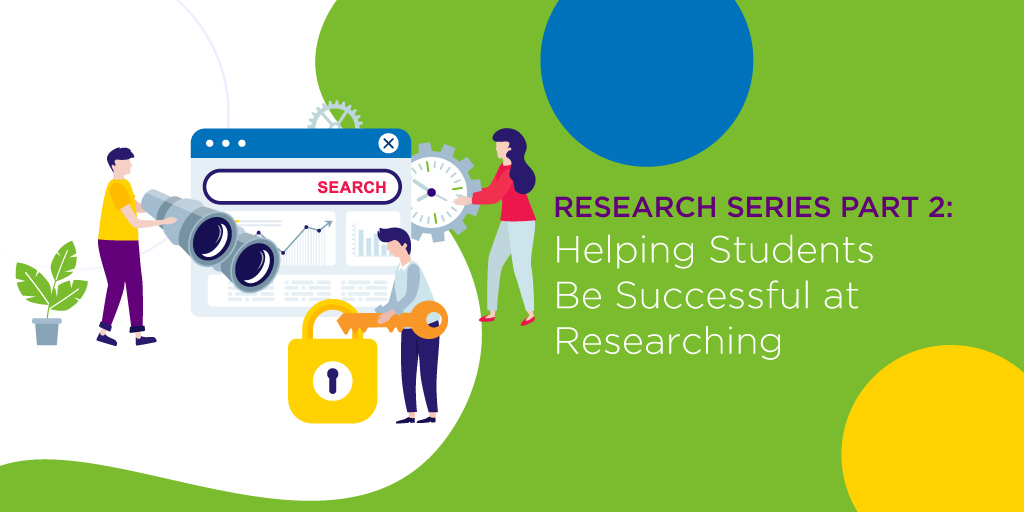
In part one of this series, we broke down all the various reasons why research can be a real challenge for our students. It requires a complex mix of managing multiples pieces of information, gauging those pieces of information for validity and credibility, and then synthesizing all of it into a product that an audience can understand.
This is a lot, and it doesn’t even take into account the other challenges that students can have with writing (spelling, typing, creating sentences, grammar rules, etc.). So how can we help students be successful when it comes to researching and the putting these ideas into a presentation or paper?
Adding Structure to the Process
The good news is that there are answers that can help both students and teachers to be successful. Here are some structures that teachers can use in their classroom to help with these issues:
- Growth mindset: A growth mindset is crucial for students as they research—it can help them to have realistic expectations heading into the process. This is going to be hard, this is going to be work, and this is going to require some opportunities for failure. Students should expect to find five to 10 sources that won’t actually work well for their paper, which can help to frame their struggle as success. Ruling out bad sources is actually a good thing, and it shows that students are really learning and discerning as they do their research.
- Setting requirements: As a former language arts teacher, I always hated minimum requirements for papers. Students would typically shoot for the minimum and then quit, regardless of whether or not the topic was ready to be concluded at that point. With that said, while students research, I think minimum requirements for searches, articles, and time can ensure that students put in the necessary work. As a student starts on a topic, they should try numerous ways to conduct the search: different wording, forming it into a question, different keywords added and removed, etc. The same is true of the number of articles that students should read—this is really where the growth mindset kicks in. Spending time reading articles that might be useless is a tough sell for students, but it is a critical part of the process and needs to be reinforced by the teacher.
- Providing examples: Another thing that teachers often forget as they begin a research project is the “I do, we do, you do,” model. Teachers sometimes run full force into researching without the proper scaffolding. Giving some example papers for students is a good start, but many students don’t know how to get from point A to point B, let alone from point A to point Z. Teachers should go through the different obstacles with students, and all of these should be “we do” examples in the classroom that students are supported through. For example:
- “Here is how we can alter our search if we aren’t finding what we want.”
- “Here is how I can decide if this article is one that I think I may want to keep reading.”
- “Here is a good source and here is how I know it is reliable.”
- Teaching about reliability: Along this same vein, it is highly effective to simulate finding reliable sources with the students. A teacher could do a jigsaw activity with the class using different sources to help compare what might make something better or worse when it comes to how credible it is. There is also a component to addressing a counter-argument in the standards, so keep in mind that something not being credible doesn’t necessary mean it conflicts with the thesis. Students should read sources that argue against their ideas, as long as those sources are reliable.
- Modeling safe searching: There are a couple of different ways to help support students when they get to the point of actually searching on the internet for information. First, by creating a safe search through Google, students will be protected from unwanted sites and possibly problematic situations online. Most schools have filters in place to help avoid this, but modeling and teaching the students about safe searching on the internet is important—maybe even worth a full lesson if time allows.
There are many different ways that teachers can help to support students as they struggle through their researching efforts. By keeping a positive attitude and maintaining a growth mindset, both students and teachers can feel as though they are making progress toward the objective of learning through research.
Did you miss the first part of our research series? Click here to catch up. For more helpful teaching tips all year long, be sure to subscribe to our Educator blog today!



